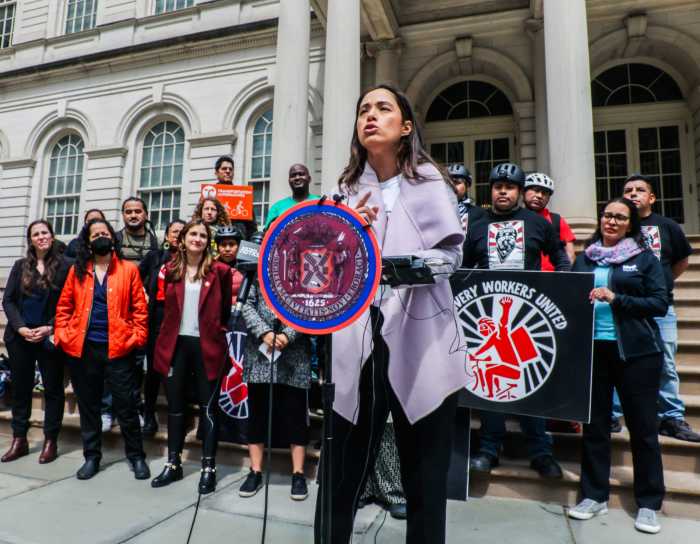
Across the city, hidden gems are off limits to New Yorkers, like the roof and interiors of Grand Army Plaza, the Washington Square Park arches and the New York State Pavilion in Flushing Meadows-Corona Park.
A City Council hearing Thursday explored giving the public a chance to check out seven of those closed attractions in the flesh, but there are a lot of roadblocks. City Councilman Mark Levine said many of the locations, such as the Soldiers and Sailors Monument in Riverside Park, were once major draws for tourists and are only closed because of neglect and decay.
“Investing in expanding access would yield incredible benefits to New Yorkers and visitors alike, offering countless opportunities for education and inspiration,” he said.
While officials from the parks department agreed there needed to be more access to public space, they were limited by their resources to pay for repairs and maintain the sites. Matt Drury, director of government relations for the parks department, said some of the locations are structurally not safe for more than one person at one time.
The inside of the Washington Square arch, for example, has narrow passageways and the roof can’t hold many people, he said. “The interior space for the arch wasn’t made for visitor access,” he said.
City Councilwoman Liz Crowley, who introduced a bill that would transfer jurisdiction of Hart Island from the Department of Corrections to the parks department so it could be open to the public, suggested the parks department could partner with nonprofit groups to help maintain the areas. She cited Green-Wood Cemetery, which offers historical tours, as an example of a successful partnership.
“There is a lot of opportunity there,” she said.
Drury said the agency has been working with officials and groups to spruce up the sites, such as its ongoing restoration efforts at the New York State Pavilion with the help of the Queens borough president’s office, which allocated over $13 million.
Still, public space advocates say the city could put in some more effort. Moses Gates, of the nonprofit Regional Plan Association, said similar investments have gone a long way in the past, such as federal government’s restoration of the Statue of Liberty’s interior in the 1980s.
“We [the public] decided it was a value to give access to the top of the crown and the government made it happen,” he said.
Here are the spaces the city would like to see open to the public:
- North Brother Island: The 20-acre space is just southeast of the Port Morris neighborhood in the Bronx and was the former home of Typhoid Mary.
- Prison Ship Martyrs Monument: The 108-year-old monument in Fort Greene Park honors the 11,500 men and women who died while being held captive on British prison ships during the Revolutionary War.
- Grand Army Plaza Soldiers’ and Sailors’ Arch: Prospect Park’s attraction only opens its interior on occasion for art shows and performances.
- Hart Island: The city’s potter’s field occupies 101 acres. Currently, the city’s Department of Correction owns the island and last year it began offering visits for family members of the deceased.
- The Croton Aqueduct: The 41-mile aqueduct was the city’s first water supply system. It has several vacant aspects that would be fun for visitors including the 119th Street Gatehouse and the High Bridge Tower.
- New York State Pavilion: The Tent of Tomorrow in Flushing Meadows-Corona Park has been closed to the public since 1974 due to poor conditions.
- Soldiers and Sailors Monument: The white marble monument in Riverside Park pays tribute the Union soldiers who fought during the Civil War. The public can only visit its exterior.
- Washington Square Arch: The interior and roof of the 77-foot high arch is closed to the public and only used for maintenance.






































